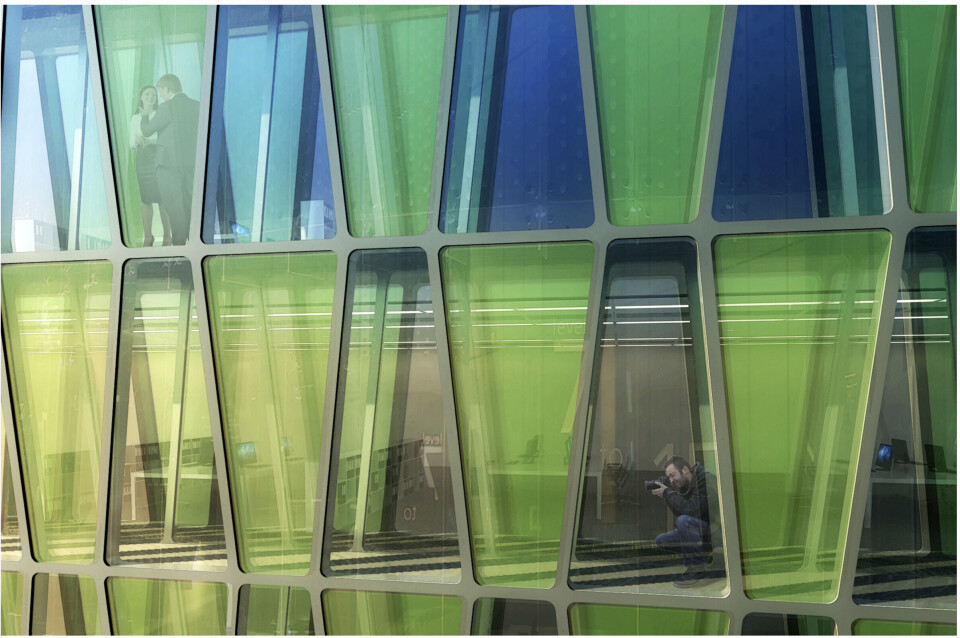-
Group purchase offer for wood pellets launched by French consumer association
Highly competitive prices pledged with applicants given a quote they can choose to take up (or not)
-
French energy vouchers: 2025 date confirmed – and it is much later than usual
Five million people are eligible for the physical voucher, which can be up to €277
-
How much are gas prices in France rising in April - and why?
It comes after six consecutive monthly rises. Try these tips to reduce your bills
Algae farm windows help French flats go green
The initiative allows firms to make money from harvesting the crop while at the same time reducing energy consumption in the building

Windows filled with microalgae are to feature in a new student residence in Paris – both to insulate the building and to offer cultivation opportunities.
The triple-glazed windows comprise standard double-glazing with an extra layer filled with warm water connected to a pump system, in which the microalgae will be grown.
Microalgae have a variety of commercial uses, including in health foods, as biofuel, and in the manufacture of pharmaceuticals and cosmetics.
Energy consumption halved
Anouk Legendre, one of two architects in charge of the project in the 9th arrondissement, said: “It is a very beneficial system, reducing energy consumption of the building by 50% and the energy needed to grow the microalgae by 80%.
“In addition, you have a crop of top-quality microalgae to harvest, with market prices for high-demand species of between €500 and €800 a kilogram.”
The algae windows will be interspersed with clear panes so residents can see out, but will let a green light filter into the interior.
‘Significant revenue’
Ms Legendre’s firm, XTU Architects, has been busy on the project for 10 years, building a working prototype four years ago.
The nine-storey residence, which will provide accommodation for doctoral students, is due to open by September 2024 and will have 350m² of the algae windows.
“It is a bit too small for optimal efficiency, for which you would need 800m² of windows, but should still provide significant revenue and energy savings to offset cost,” said Ms Legendre.
Energy savings come from the inertia of the building’s mass, meaning the algae solution does not have great variations of temperature, while the fluid-filled windows provide good insulation and some heat to the building.
Symbiotic relationship
“It is a symbiotic relationship: the building benefits from the algae and the algae benefit from the building,” said Ms Legendre.
“In a world where the population is growing continuously and where cities are getting larger and more crowded, we see it as a solution to provide vegetable protein, which will be needed as an alternative to animal protein.
“Another benefit is that the algae absorb carbon dioxide and give out oxygen, like plants, as they grow.”
The microalgae are harvested by drawing off up to a third of the water in the window system each day. This is then put through a centrifuge, and the clean water returned to the circuit.
Health food, cosmetics and pharmaceuticals
Algae varieties are still being perfected for the system, but it can be used for the common spirulina algae found in most health food stores as a supplement.
The price for this algae, however, would be well below the €500/kg target, as it can be grown successfully outside under plastic tunnels in summer.
Ms Legendre says the most profitable market will probably initially be for fresh algae, used in certain recipes and as a health tonic.
It is difficult to buy in shops as it is challenging to keep it for very long.
More interesting in the long term will be microalgae grown specifically for use in cosmetics and pharmaceuticals. The strictly controlled conditions of the algae windows mean that very pure products can be made.
It was hoped the microalgae could also be used to make biofuel – the University of Poitiers led global research into this – but it did not make economic sense.
Linked buildings
A technician will be employed to run the microalgae system and harvest the product five days a week.
In future, if other buildings are constructed nearby with the same system, the technician will be able to manage them too as the circuits are highly computerised.
The cost of installing microalgae windows to a building is “significant”, said Ms Legendre, although it varies depending on the construction.
“Every project is so different that it is impossible to say how much extra it will cost,” she said.
“What is clear, however, is that the sale of the microalgae and lower energy costs as a result of having the windows mean that, in the long term, the building will cost much less to run than one without the system.”
Related articles
Glow-in-the-dark marine bacteria trialled as lighting in French town
Cart horses collect Christmas trees and ‘bring joy’ across France
The steam train in France which runs on coal – and olives
























